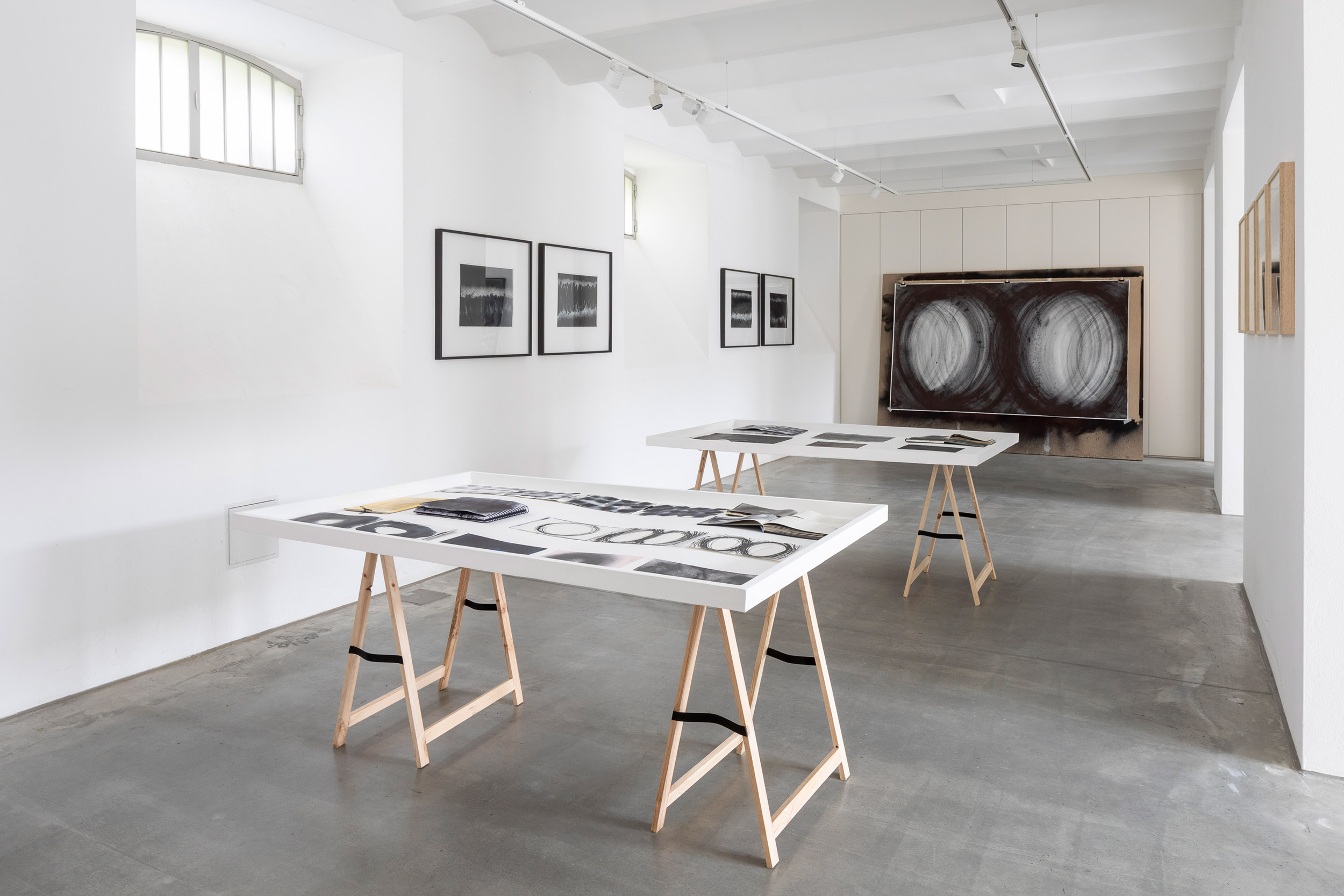The Limit
of Representation exhibition







"The Limit of Representation" exhibition project started while I was working on the light installation "The Collapse", at the Max Planck Institute in Garching, Germany.
At the time I started a series of drawings in my notebook, after a huge break of probably more than 15 years of not painting. I noticed that many of my interests in painting that I had in early years of my development, when I was between 16-22 years of age, had a lot in common with scientific visualisations that I am now researching.
During this process I wrote a text "The Limit of Representation" that became the foundation for his whole exhibition.
At the time I started a series of drawings in my notebook, after a huge break of probably more than 15 years of not painting. I noticed that many of my interests in painting that I had in early years of my development, when I was between 16-22 years of age, had a lot in common with scientific visualisations that I am now researching.
During this process I wrote a text "The Limit of Representation" that became the foundation for his whole exhibition.
In this show I presented 22 new painting developed during my stay at the Bildraum studio, including initial drawing studies for these paintings. This is the most comprehensive exhibition of my work so far, creating a bridge for understanding of my previous installation work about hidden structures and principles.
What is currently done at Max Planck Institute for Quantum Optics, in the quantum many-body systems division, are quantum simulations. Quantum simulations measure the interaction of atoms at the quantum level, something that neither classical nor quantum computers are currently capable of fully recreating.
By analogy, in the 50s and 60s, aerodynamic measurements were done in air tunnels, when digital computers were not powerful enough to do that. Today, these experiments can be simulated on a digital computer without the use of tunnels. It will also be possible to simulate quantum measurements on quantum computers, once they reach that level of computation.
These drawings can be understood as and effort of quantum simulations at the level of painting. The motivation for this research is to explore the connection between physical laws and process approach to painting, and the limitations of the digital computer as a medium for representing the quantum level.
Drawings are the result of direct interaction of mediators (artists), tools and surfaces. I tried to purify the movement of all formal deliberations. When the drawing is reduced to a repetitive function, an elementary unit of motion, surrendered to errors and physical properties of color and surface, the results of these artistic experiments irresistibly resemble particle motion, generative growth structures, the Lorenz equation, Brownian motion, subatomic particles, electron trajectories...
Drawings are not reproductions, but the result of interaction, spontaneous structure, created by a series of deliberate and spontaneous actions, coincidences, discoveries and emergencies.These results insinuate that the artist can participate in the discovery of cognition by speculative methods.



Photos by Eva Kelety & Zorica Gojkov
